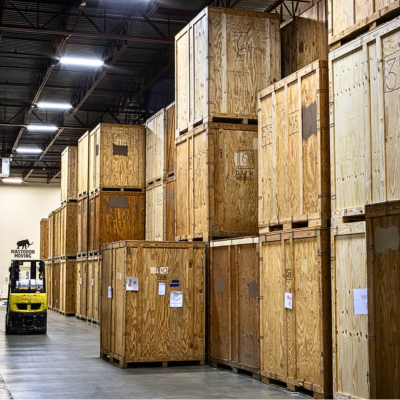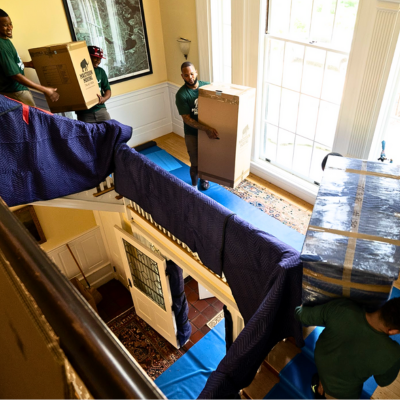
When planning a move or organizing storage, understanding linear feet can make a big difference. A linear foot measures the length of an object in a straight line, and it’s a critical factor in determining how much space your belongings will take up. Knowing how to calculate linear feet ensures that you can effectively plan, organize, and budget for your move or storage needs.
By mastering this calculation, you’ll avoid common mistakes, such as underestimating or overestimating the space required. This knowledge will lead to better decisions, smoother logistics, and a less stressful moving experience.
What Is a Linear Foot?
A linear foot is simply a measurement of length—one foot along a straight line. This unit is essential when determining how much space your items will occupy in a moving truck or storage unit. Whether you’re stacking boxes, moving furniture, or loading a truck, knowing the linear footage of your items helps maximize space and efficiency.
How to Calculate Linear Foot Pricing
When it comes to pricing, linear feet are used to determine costs based on the space required. Here’s how to calculate it:
- Measure Total Linear Feet: Determine the total linear footage of the item or service.
- Find the Price per Foot: Get the cost per linear foot.
- Calculate the Total Cost: Multiply the total linear feet by the unit price.
- Total Price = Total Linear Feet × Price per Foot
Tools for Measuring Linear Feet
The following tools are commonly used to measure linear feet:
- Carpenter’s Square
- Tape Measure
- Ruler
- Yard or Meter Stick
Linear Feet vs. Other Measurements
Linear Feet
- Measures one-dimensional length in a straight line.
- Used for objects like boards or cables.
Square Feet
- Measures two-dimensional area (length × width).
- Commonly used for rooms or floors.
Cubic Feet
- Measures three-dimensional volume (length × width × height).
- Used for storage containers or rooms.
Linear Feet in Moving Trailers
Moving trailers are priced based on the linear footage of the space you need. Here’s a quick guide to estimate how much space you’ll require:
| Number of Bedrooms | U-Pack Trailer Space Required |
|---|---|
| Less than 1 Room | Minimum of 5 linear feet |
| 1 Room or Studio | Approximately 6 linear feet |
| 1 Bedroom | Approximately 7 linear feet |
| 2 Bedrooms | Approximately 13 linear feet |
| 3 Bedrooms | Approximately 17 linear feet |
| 4 Bedrooms | Approximately 23 linear feet |
| 5+ Bedrooms | Approximately 35 linear feet |
Why Are Linear Feet Important When Making A Long Distance Move?
Space Optimization
Calculating linear feet allows you to estimate the exact space needed for your items. This ensures you’re not overpacking or underpacking, leading to more efficient use of the truck or storage container. Learn more about packing.
Accurate Cost Estimation
Many moving companies base their pricing on the linear footage of your items. Accurately calculating the linear footage helps you plan your budget and avoid unexpected costs.
Effective Load Planning
With a clear understanding of how much space your items require, movers can strategically load the truck or storage unit, making the best use of the available space while ensuring safe transport. Learn more about moving and storage.
 Long-distance movers often charge by linear foot instead of cubic foot because it simplifies pricing, especially when moving household goods in large trucks or trailers. Here are a few key reasons why:
Long-distance movers often charge by linear foot instead of cubic foot because it simplifies pricing, especially when moving household goods in large trucks or trailers. Here are a few key reasons why:
1. Simpler Space Allocation
Charging by linear foot focuses on the length of the space your belongings take up in a moving truck or trailer. This method is easier for movers to manage because the trucks and trailers are typically loaded in a straight line from front to back. It’s a straightforward way to allocate space, which helps optimize how trucks are loaded, and it’s easier for customers to understand.
2. Practical for Long Trailers
Long-distance moving companies, often use large trailers. These trailers are typically measured and rented out based on the linear feet of space used rather than the full cubic capacity. Since most customers aren’t filling up the full height and width of a trailer, charging by cubic foot would be impractical. Measuring by length allows movers to charge based on how much of the floor space you occupy.
3. Efficiency and Flexibility
Using linear feet makes the moving process more flexible for both movers and customers. Customers pay only for the space they use. This is especially useful for partial loads, where a customer might not need an entire truck but just a portion of it. Movers can efficiently combine multiple customers’ shipments in the same truck.
4. Clearer Cost Estimates
Pricing by linear foot makes it easier to estimate moving costs. Unlike cubic feet, which require calculating the volume (length x width x height), linear footage is a simpler measurement. Customers and movers alike can measure the length of furniture or boxes and know exactly how much space will be taken up. This transparency helps customers avoid surprises with pricing.
5. Safer Packing
With linear foot pricing, movers can ensure that items are packed securely in a straight-line configuration, making sure that belongings aren’t overpacked or stacked precariously. When using cubic feet, there’s a temptation to maximize vertical space, which might result in damage to belongings.
In conclusion, charging by linear foot provides a more straightforward, efficient, and transparent method for both the movers and customers when dealing with long-distance shipments, particularly when using large trailers.
How to Calculate Linear Feet
To calculate linear feet, follow these simple steps:
Step 1: Measure Length
Measure the length of each object in feet.
Step 2: Convert Dimensions if Needed
If other measurements are in inches, convert them to feet. Use the following conversions:
- 1 inch = 0.0833 feet
- 12 inches = 1 foot
Step 3: Add Up the Linear Feet
Once you have the measurements in feet, simply add them together to get the total linear footage.
How to Calculate Linear Feet for Moving:
- Start with a simple item, like a sofa.
- Measure from one end to the other using a tape measure.
- The number you get is the length in linear feet. Easy!
Why Linear Feet Matter: For most moves, linear feet aren’t crucial:
- Local moves charge by the time spent loading and unloading. More about local movers.
- Long-distance moves charge by the weight and distance. Here is an in depth look at types of Long distance movers.
- Overseas moves use flat rates based on weight.
When Linear Feet Are Important: If you’re using a freight company, you’ll pay based on the trailer space used. For example, if you fit 5,000 pounds of goods into 10 linear feet, you’ll pay less than someone using 12 feet for fewer items. Most freight companies provide rough estimates for different home sizes, but these can be inaccurate, so plan for 10-20% more space than expected.
Freight vs. Full-Service Movers: Freight companies can save money, but they don’t provide labor for loading or unloading. You pay only for the space you use, unlike with rental trucks, where you pay for the whole vehicle. Read more about full service moving.
What to Watch For:
- Freight trailers may not fit larger homes with garages, attics, and basements.
- Their suspensions and deck heights may not be ideal for fragile goods.
- Make sure to verify equipment and service areas with the company before committing.
Linear Feet vs. Square Footage
It’s important to understand the difference between linear feet and square footage:
What Is Square Footage?
Square footage measures the area of a space, calculated by multiplying its length and width. For instance, a room that’s 10 feet long and 12 feet wide has a square footage of:
- Square Footage = Length × Width = 10 feet × 12 feet = 120 square feet
Conversion of Common Units to Feet
| Unit | Conversion to Feet |
|---|---|
| Inches | 1 inch = 0.0833 feet |
| Yards | 1 yard = 3 feet |
| Centimeters | 1 centimeter = 0.0328 feet |
| Meters | 1 meter = 3.2808 feet |
Calculating the Linear Foot of Lumber Boards
Lumber boards are often measured in linear feet for construction projects. To calculate the linear feet of lumber:
- Measure the Length: Measure each board in feet.
- Count the Boards: Note how many boards you have.
- Calculate the Total Length: Multiply the length of each board by the number of boards.
For example, if you have 10 boards, each measuring 8 feet, the total linear footage is:
- Total Linear Feet = 8 feet × 10 boards = 80 linear feet
Why Pay by Linear Foot?
Cost Efficiency
You only pay for the space you use, which is especially useful for smaller or irregularly shaped items.
Flexibility
Linear foot pricing allows you to tailor the space you need, avoiding overcharges for unused space.
Transparency
With linear foot pricing, you clearly understand how your costs are calculated, promoting trust and confidence in the service provider.
FAQs
How is Linear Footage Different from Square Footage?
Linear feet measure length, while square feet measure area. Linear footage helps with space optimization, while square footage is used for planning floor areas.
How Many Square Inches Are in a Square Foot?
There are 144 square inches in one square foot.
Mastering linear feet ensures smarter planning and cost efficiency in your move. Whether you’re calculating space for a truck or storage unit, understanding these measurements simplifies the process and guarantees a smoother move.











